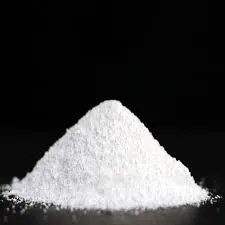Chemicals Used in Wastewater Treatment
Wastewater treatment is a crucial process for protecting public health and the environment. As urbanization and industrial activities increase, the volume of wastewater generated rises substantially, necessitating effective treatment techniques to mitigate its impact. One of the primary components of this treatment process is the use of various chemicals, each serving specific functions to ensure the removal of contaminants and the safety of discharged water.
Coagulants and Flocculants
The initial phase of wastewater treatment often involves the removal of suspended solids, which can be achieved through the use of coagulants and flocculants. Coagulants, such as aluminum sulfate (alum) and ferric chloride, are added to the wastewater to destabilize fine particles. This destabilization causes the particles to clump together, forming larger aggregates known as flocs. Flocculants, which are typically high molecular weight polymers, enhance this process by further promoting the aggregation of these flocs. The result is a substantial reduction in suspended solids, which can then be easily removed from the water during subsequent settling or filtration processes.
Disinfectants
After the removal of suspended solids, the next critical step in wastewater treatment involves disinfection. This step is essential to eliminate pathogenic organisms that pose health risks. Common disinfectants used in this stage include chlorine, ozone, and ultraviolet (UV) light. Chlorination, while effective, requires careful management due to the formation of potentially harmful byproducts, such as trihalomethanes (THMs). Ozonation is an alternative that offers a powerful oxidative action but requires high energy consumption and may not leave a residual disinfectant in the treated water. UV disinfection, on the other hand, involves exposing the water to UV light, effectively inactivating pathogens without introducing harmful chemicals into the environment.
pH Adjusters
chemicals used in wastewater treatment

Maintaining an appropriate pH level is crucial throughout the wastewater treatment process. Acidic or alkaline conditions can negatively affect the effectiveness of other chemicals used in treatment and the biological processes in biological treatment stages. Common pH adjusters include sulfuric acid and sodium hydroxide, which are added to maintain optimal conditions for various treatment processes. For example, adjusting pH can enhance the efficiency of coagulation and facilitate biological degradation by creating a suitable environment for microorganisms.
Nutrient Removal Agents
In many cases, wastewater contains high levels of nutrients, particularly nitrogen and phosphorus, which can lead to eutrophication in receiving waters. To address this issue, particular chemicals, such as aluminum salts or iron salts, can be used to precipitate phosphorus from the water. Additionally, biological processes, often facilitated by the introduction of specific additives or engineered microbial consortia, are employed for nitrogen removal. This combined approach helps to prevent the adverse effects of nutrient loading in aquatic ecosystems.
Advanced Oxidation Processes
Advanced oxidation processes (AOPs) have emerged as effective solutions for treating wastewater containing recalcitrant organic pollutants, pharmaceuticals, and personal care products. These processes typically involve the generation of hydroxyl radicals using oxidants like hydrogen peroxide or ozone in combination with UV light or catalysts. AOPs are particularly promising for achieving higher levels of effluent quality and ensuring compliance with stringent regulation standards.
Conclusion
The use of chemicals in wastewater treatment is multifaceted, addressing various contaminants and ensuring the safety of treated water. As regulations become stricter and societal expectations regarding environmental protection rise, the development and application of innovative chemical solutions will continue to play a vital role. Understanding the function and interactions of these chemicals is essential for optimizing treatment processes and achieving sustainable wastewater management. By employing a combination of coagulants, disinfectants, pH adjusters, nutrient removal agents, and advanced oxidation methods, municipalities and industries can effectively treat wastewater, contributing to cleaner waterways and a healthier environment.

